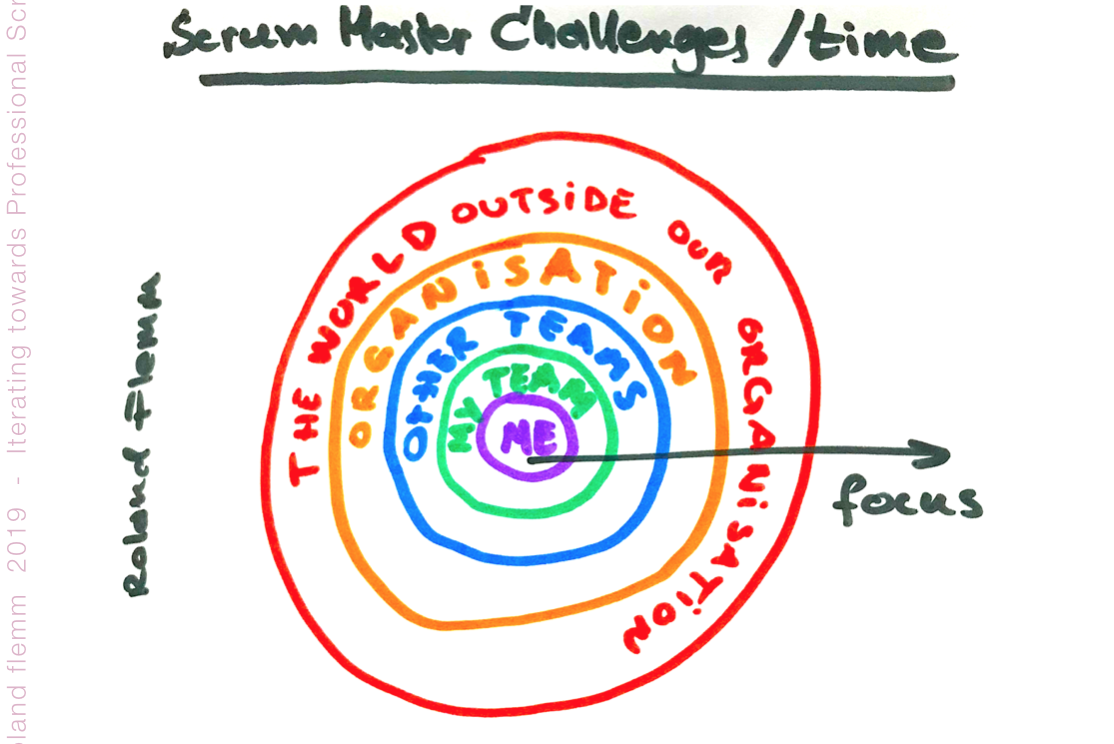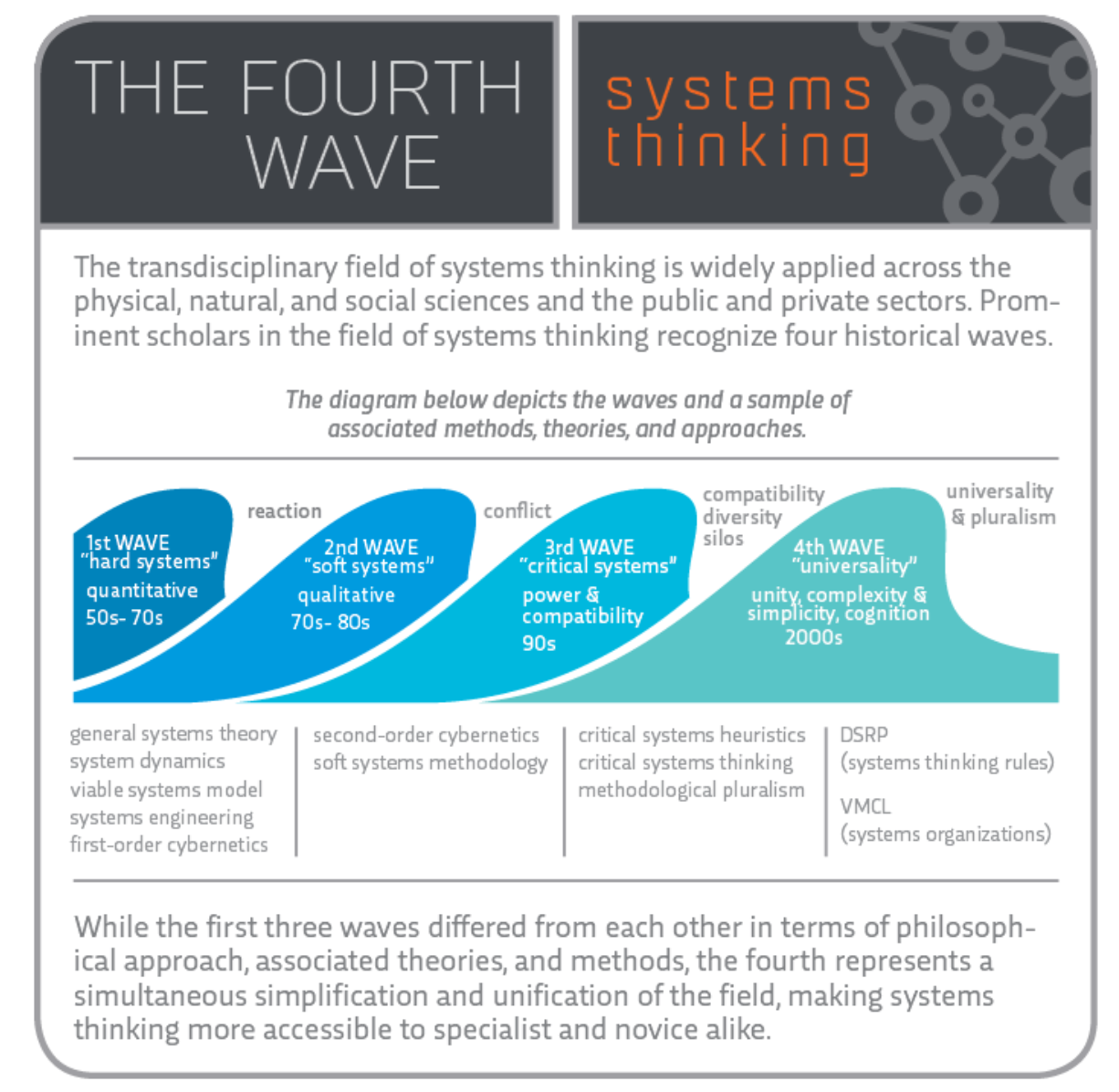
In a series of blog posts, I want to share how you can use Systems Thinking to resolve complex problems such as software teams not delivering the right software fast enough.
I am a Scrum Master and as I was discovering what this role is all about, I learned that Scrum Mastership is a complex profession. While I was getting better at it, I noticed that the problems I was facing were getting more complex over time (I published an article about this: “Iterating towards Professional Scrum”). When I started some 10 years ago, I fixed software delivery problems by setting up agile teams doing Kanban, and now I help companies make their software development more productive through an organisational redesign. On my journey solving increasingly complex problems, I discovered Systems Thinking.

At first, I was a bit in doubt about the value of Systems Thinking as a complementary practice to Scrum. In my understanding, it was about thinking holistically and drawing CLD’s (casual loop diagrams). I noticed that I found it difficult to apply it in my work, although my heroes (Cesario Ramos, Craig Larman, Bas Vodde) were recommending it. When trying to model systems, there was always this plot-twist, this discovery you needed to make the modelling valuable and I had difficulties discovering them. Instead of accepting I was not smart enough for this kind of thinking, I decided to try to learn more about it. My goal was to find tools that would enable me to apply Systems Thinking in my daily work as a Scrum Master.
Now that I have updated my understanding of my own thinking I feel I have taken a giant leap towards unravelling really difficult problems ranging from global warming to problems kids have at school and more importantly for me: Scrum teams not delivering software…
What is Systems Thinking?
In plain terms:
Systems Thinking is understanding the simple rules of how our thinking works and apply those rules to solve extremely complex problems.
Philosophically:
Systems Thinking is not a process but an emergent property of a complex adaptive system called “thinking’.
Systems Thinking is about Systems
In the first 10 minutes of this talk, Dr Ackoff explains Systems in his inimitable way:
The fundamental principles of Systems Thinking:
- A system is a whole and contains two or more parts.
- The parts are all interconnected, each part influences the behavior of the whole, but how the parts affect the whole depends on what other parts are doing.
- Each part can be divided into subgroups that act as a part of the whole.
This can be summarized into the definition of a system (Ackoff):
A system is a whole which is defined by its function in a larger system of which it’s a part.
These fundamentals provide the following guiding principles:
- The system has emergent behavior, which the parts are taken separately do not have. When the system is taken apart, it looses its emergent behavior. (A car provides transportation, but none of the parts of a car can do that by itself).
- Improving the performance of a part will not necessarily improve the performance of the whole, in fact, it is likely to worsen the overall performance of the system. (Teams are examples of parts of a system called the software department. Getting one team to perform excellent will not necessarily make the whole software company perform better).
Systems Thinking is about Thinking
Systems Thinking is about thinking in a larger context, thinking “whole”. That sounds a bit fluffy maybe, but it is very concrete. I also like to call it “slow thinking”, as opposed to “fast thinking”. It’s about looking at the larger context of things. The Avatar movie is a good example of thinking “whole”: We understand how the ecosystem of the Avatar world is interconnected and how it will be destroyed by the army intervention.

We learn by processing what happens around us, we model that data and compare it to what we have experienced or learned already. With Systems Thinking, we become more aware of our mental processes and we can improve our skill of understanding and solving complex problems.
Solving problems is one of the tasks Scrum Masters do all the time. We help our teams solve impediments, and we act as a change agent, tackling issues of scaling and adoption of Scrum in the whole organizations. Systems Thinking is strongly connected to the Scrum fundamentals of empirical process control: It makes transparent which things matter and reveals how problems are related. This helps to structure our thoughts and simplify conversations while inspecting problems. And it improves adaptation because it increases the chances of our improvement proposals to be sustainably successful.
The Scrum guide does not refer directly to Systems Thinking, but scaling frameworks like SAFe and LeSS see Systems Thinking as one of their fundamental principles.
- SAFe: https://www.scaledagileframework.com/apply-systems-thinking/
- LeSS: https://less.works/less/principles/systems-thinking.html
Systems Thinking helps to understand the grand scheme of things and how its parts interact. It helps to determine sensible intervention points to make an impactful change in a system. For managers solving problems in organizational systems (i.e. Scrum Masters), this is a very useful skill.
In this System Thinking blog series, I will share some System Thinking concepts to promote this valuable tool for solving difficult problems at work. I will touch upon the following subjects:
- Wicked Problems
- Complex Adaptive Systems
- Mental Models and behavior
- Making Distinctions
- Understanding Systems
- Understanding Relationships
- Seeing Perspectives
- System thinking and Organizational change
Some background
Systems Thinking emerged in the 1950s and has evolved through several waves.

More valuable links
- Peter Senge explaining climate change: https://www.youtube.com/watch?v=0QtQqZ6Q5-o.
- The basic ST approach: https://thesystemsthinker.com/introduction-to-systems-thinking/
- How our thinking works: https://www.youtube.com/watch?v=0uCogeTqRsQ&feature=youtu.be
- Dr Derek Cabrera — How Thinking Works: https://www.youtube.com/watch?v=dUqRTWCdXt4
- Systems thinking, the crux of organizational learning: https://drive.google.com/file/d/0B-4syEPuYKg-eEE2N3d6VW05NGs/view
